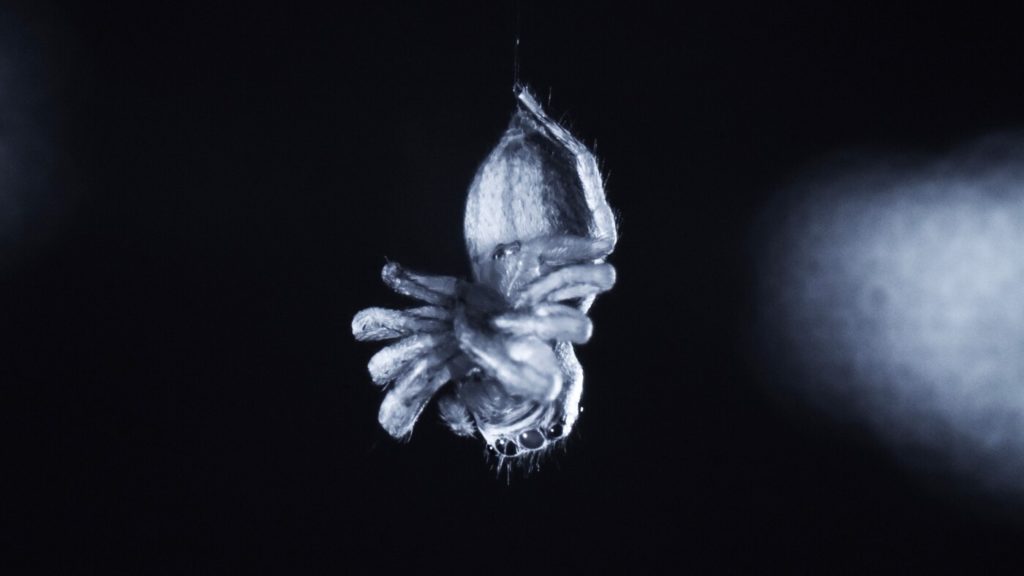
According to a recent study, jumping spiders engage in restorative behaviors similar to REM sleep. hidden caption Daniela Roessler
switch to caption Image of Daniela Roessler According to a recent study, jumping spiders engage in restorative behaviors similar to REM sleep.
Roberta Roessler A jumping spider is the cutest kind, as you can see if you’ve ever seen one up close.
Many are as small as the tip of your finger and have large, multicolored bodies that are fluffy. Daniela Roessler, a behavioral ecologist at the University of Konstanz in Germany, described them as extremely extraordinary.
She remarked, “I believe they’re just remarkable in a number of ways. They have been demonstrated to be quite intelligent, and they have this wonderful vision that is really not comparable with any other… insects or arthropods.
Jumping spiders adapt their hunting techniques to the type of prey they are after. They have intricate mating dances and can leap extraordinarily far for their size.
Even at night, they might dream.
Jumping spiders appear to undergo something like to rapid eye movement sleep when they slumber at night, according to a recent study led by Roessler.
The stage of our sleep cycle during which our brains exhibit an increase in activity but our bodies remain immobile, our eyes dart rapidly, and we can have extremely vivid dreams is known as REM sleep, sometimes known as paradoxical sleep.
Overnight, the researchers recorded jumping spiders to capture actions that resemble REM sleep in other species.
Roessler said that “all the legs would curl into the body and they would tremble.” “When this occurred, we would always notice that. Additionally, we noticed several notable and plainly visible eye movements.”
The study , which is published in the Proceedings of the National Academy of Sciences, makes use of the translucent exoskeletons that young jumping spiders have. The scientists saw the jumping spiders’ tube-shaped retinas moving through their transparent bodies despite the fact that their eyes cannot move like a human’s.
Octopuses experience REM-style sleep. Likewise, spiders? The extent to which REM sleep and REM-like actions may be shared by all members of the animal kingdom requires further investigation. Given that REM sleep is still mostly unknown in humans, there are probably many things we can learn from this. 5/7 pic.twitter.com/ZXtlvSUFdj
(@RoesslerDaniela) Dr. Daniela Rler Roessler advised against making any conclusions about whether the spiders are indeed “sleeping” during these quick eye movements. Next, she continued, they’ll assess whether the behavior satisfies the criteria for sleep.
However, sleep researchers like Mark Blumberg at the University of Iowa are intrigued even by these preliminary results.
He remarked, “If I may say so, these actions themselves are absolutely lovely behaviors.” At a fundamental level, “Why do these animals do this is what we want to know.”
The study of these behaviors in the animal realm, according to Blumberg, who was not involved in the experiment, may one day help us understand how REM sleep developed. Almost all mammals and birds, as well as some invertebrates and cephalopods, have been found to exhibit REM-like behavior.
Neuroethologist Teresa Iglesias from the Okinawa Institute of Science and Technology concurred. She has investigated cuttlefish REM-like activity.
I believe we’re about to answer the “questions” of what REM sleep is, what it is used for, and why it initially evolved. She spoke. It’s highly probable that sleep and REM sleep evolved once, many years ago, and that everyone shares the same origin, but that they present in slightly different ways in each of us.
Roessler responded that it was too soon to say if spiders dream or not. Even if they did, it wouldn’t be the same as what people do.
“It’s lovely to consider it that way, she continued, “that these spiders are hanging there and they can see themselves catching a fly or courting a mate. Although incredibly adorable, it will most likely be very different.”
After all, Roessler noted that although certain spiders have quite limited vision, they are highly sensitive to vibrations. She questioned whether they might instead “dream” in vibrations.
Maybe something to think about tonight before we all go to sleep.













